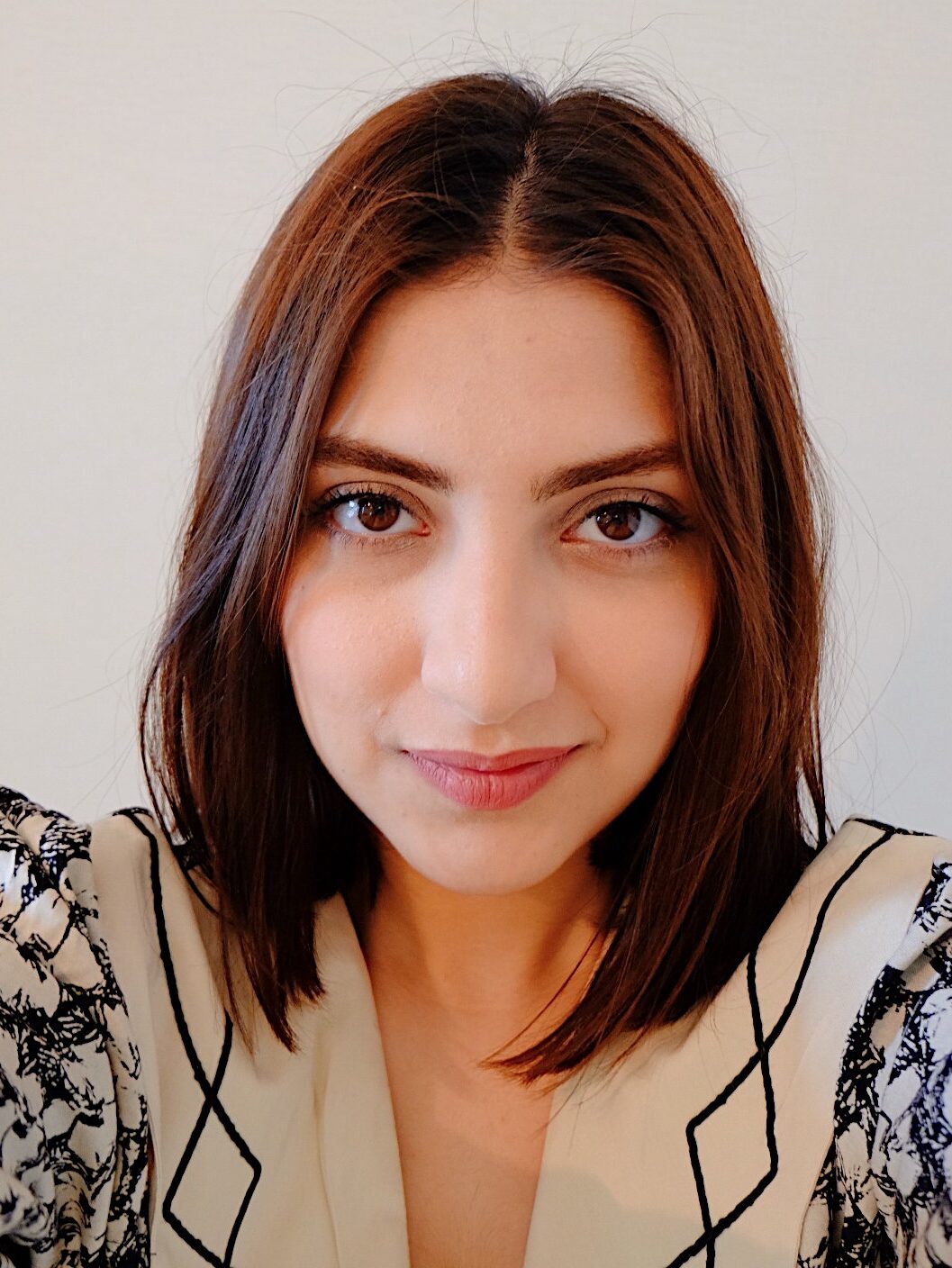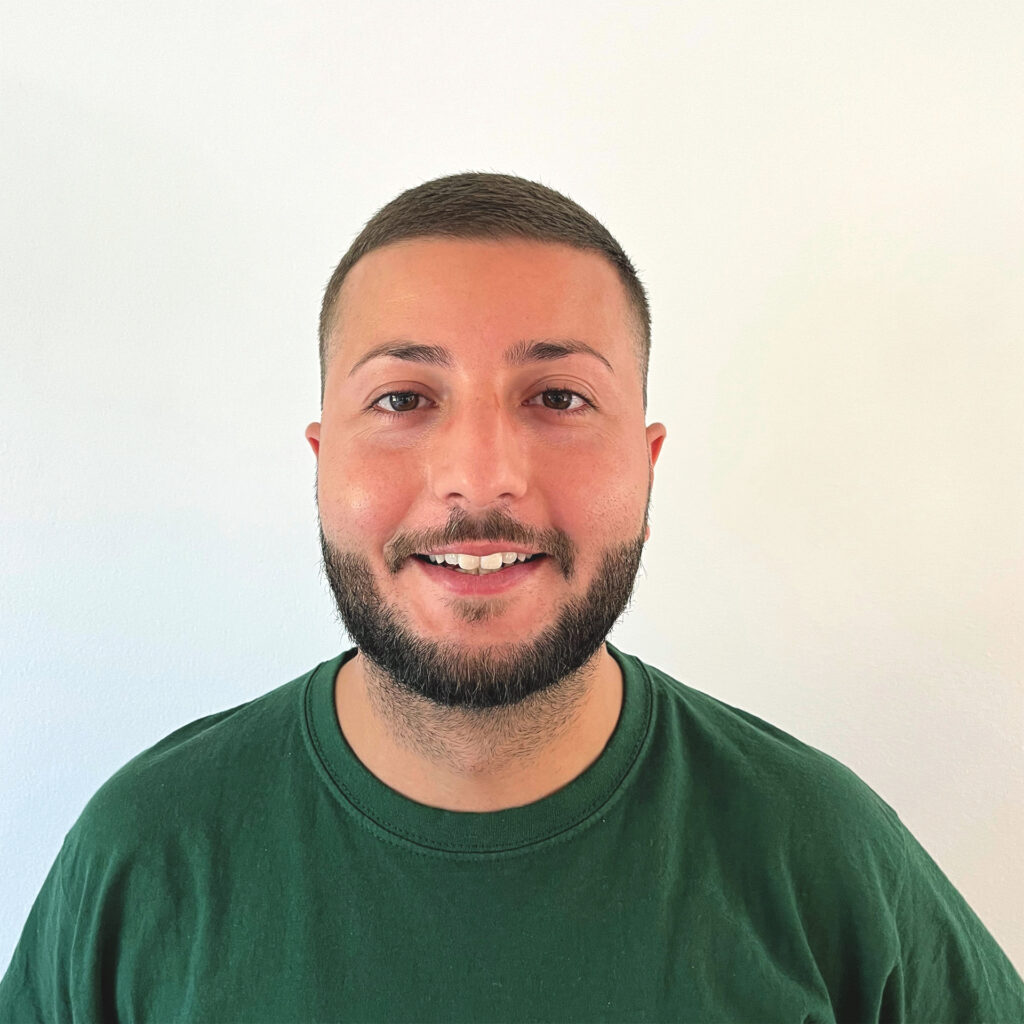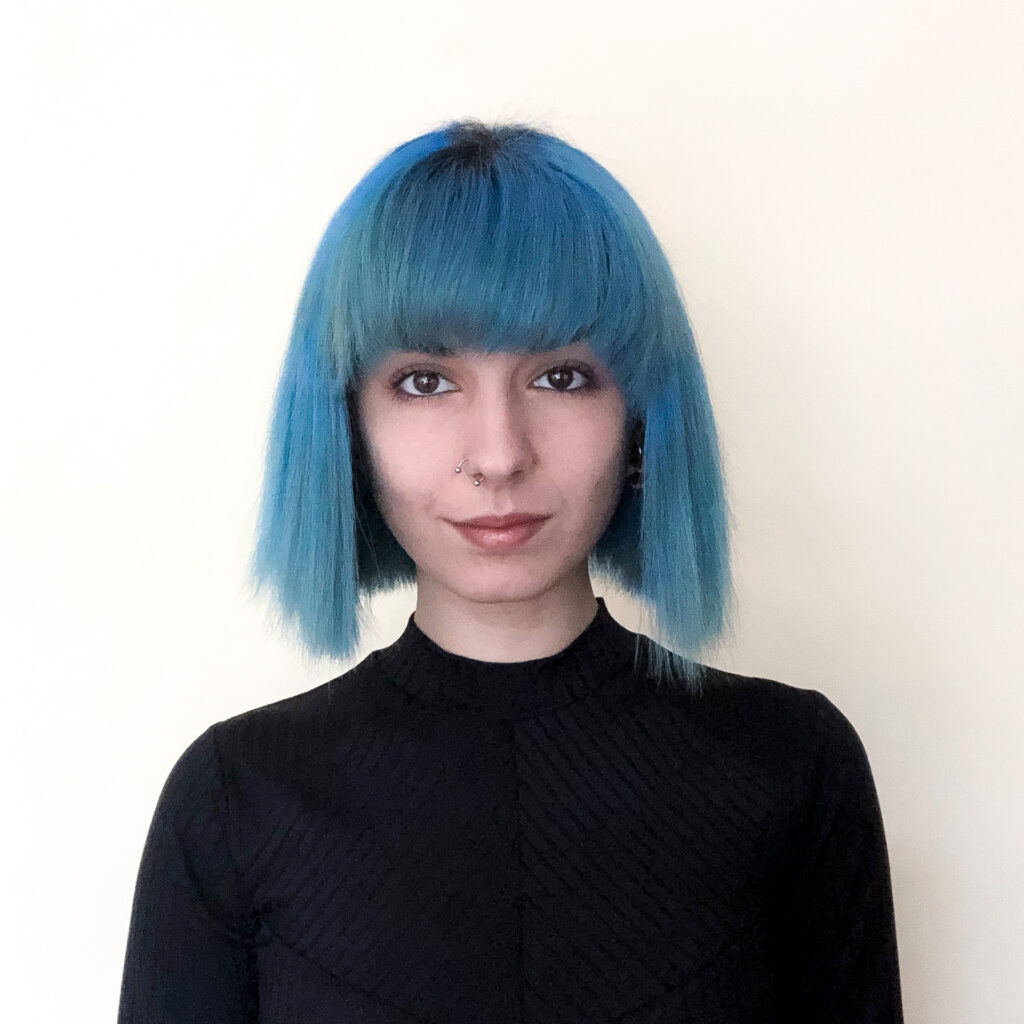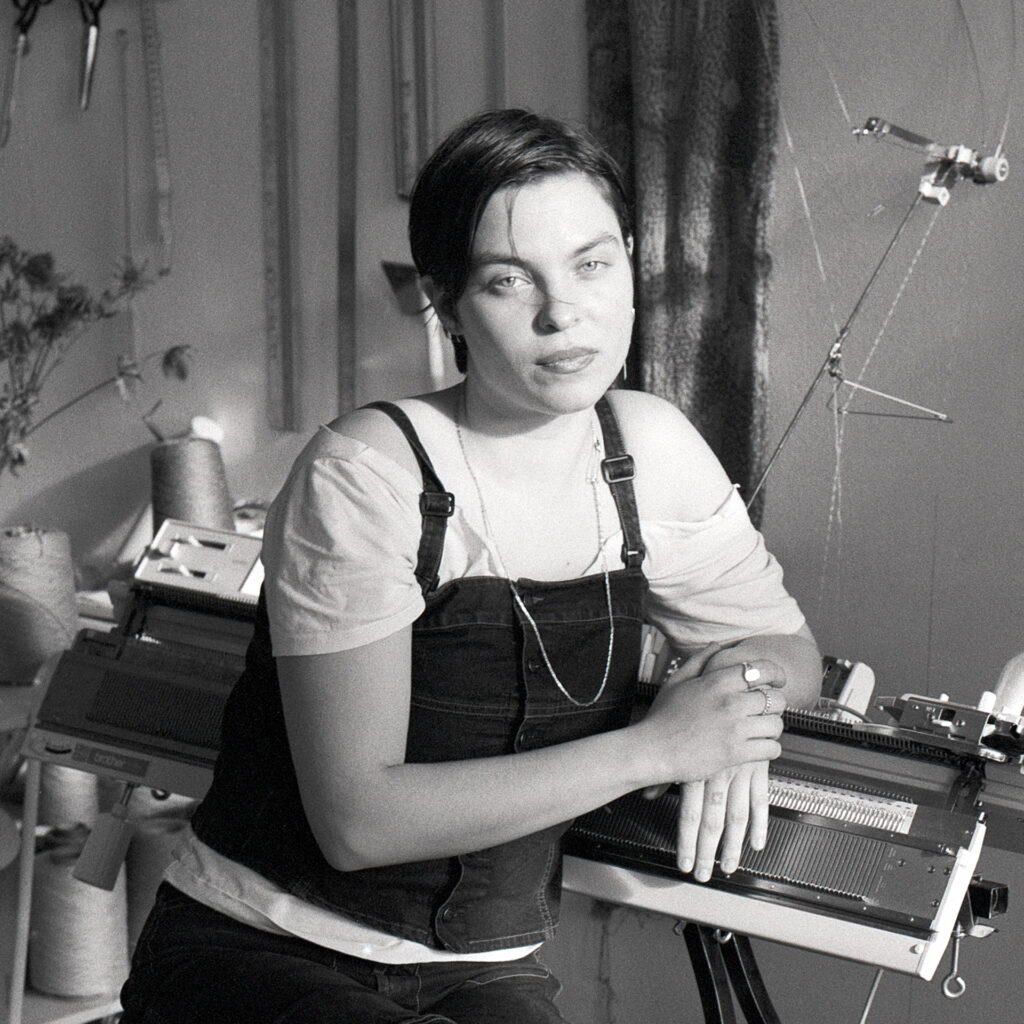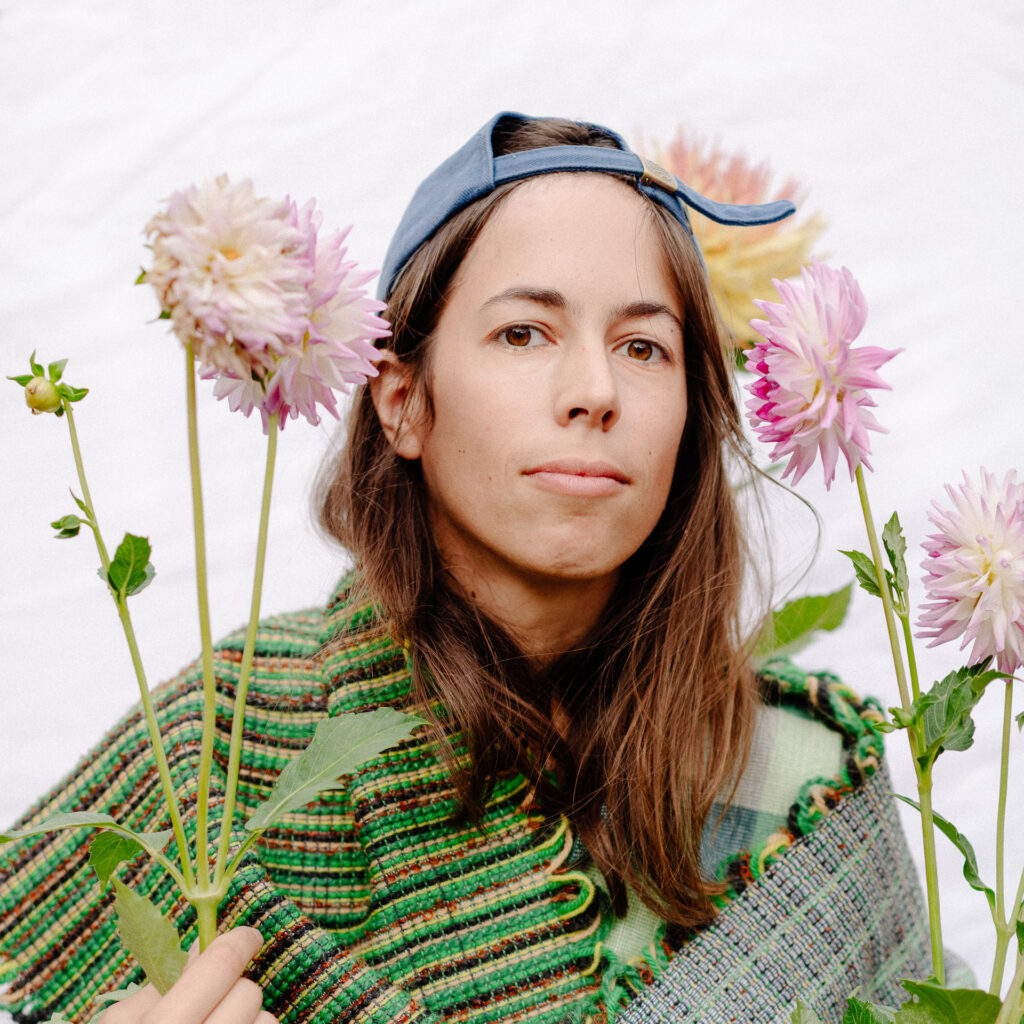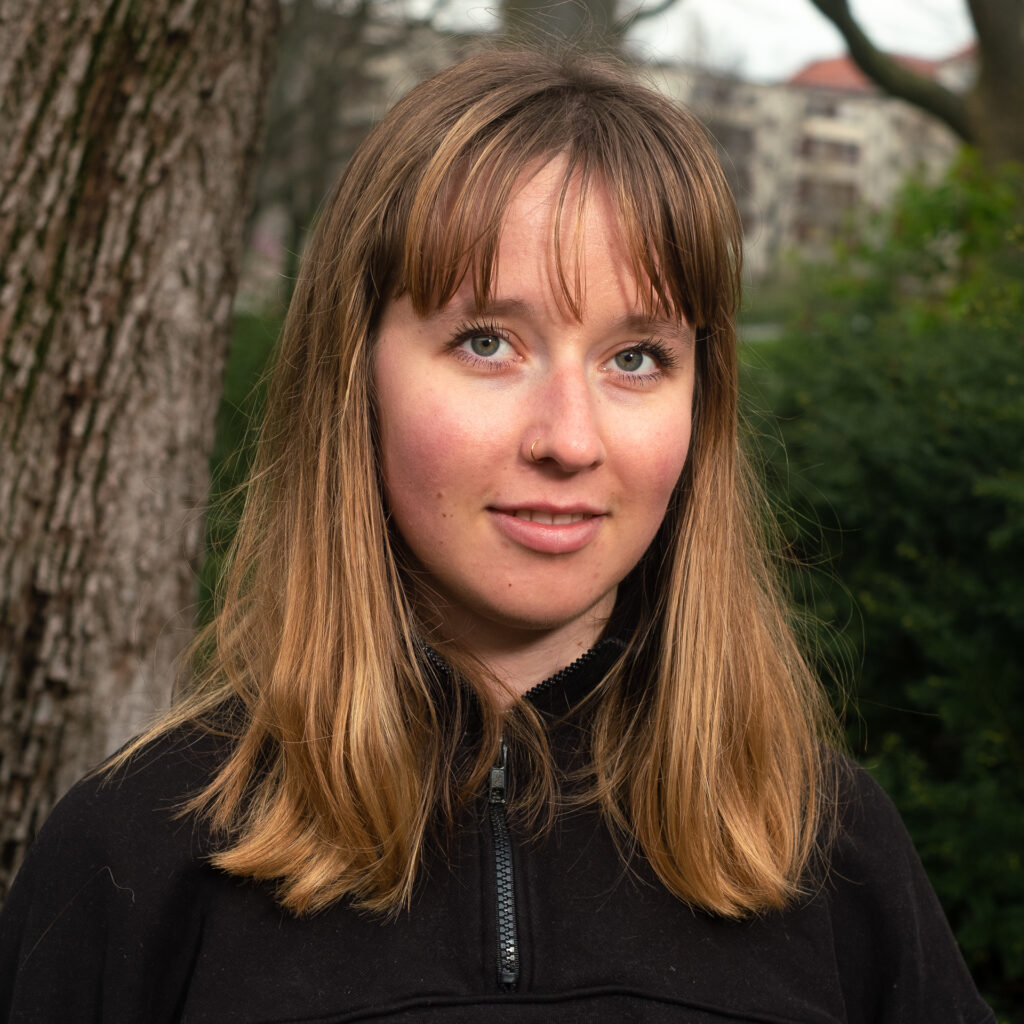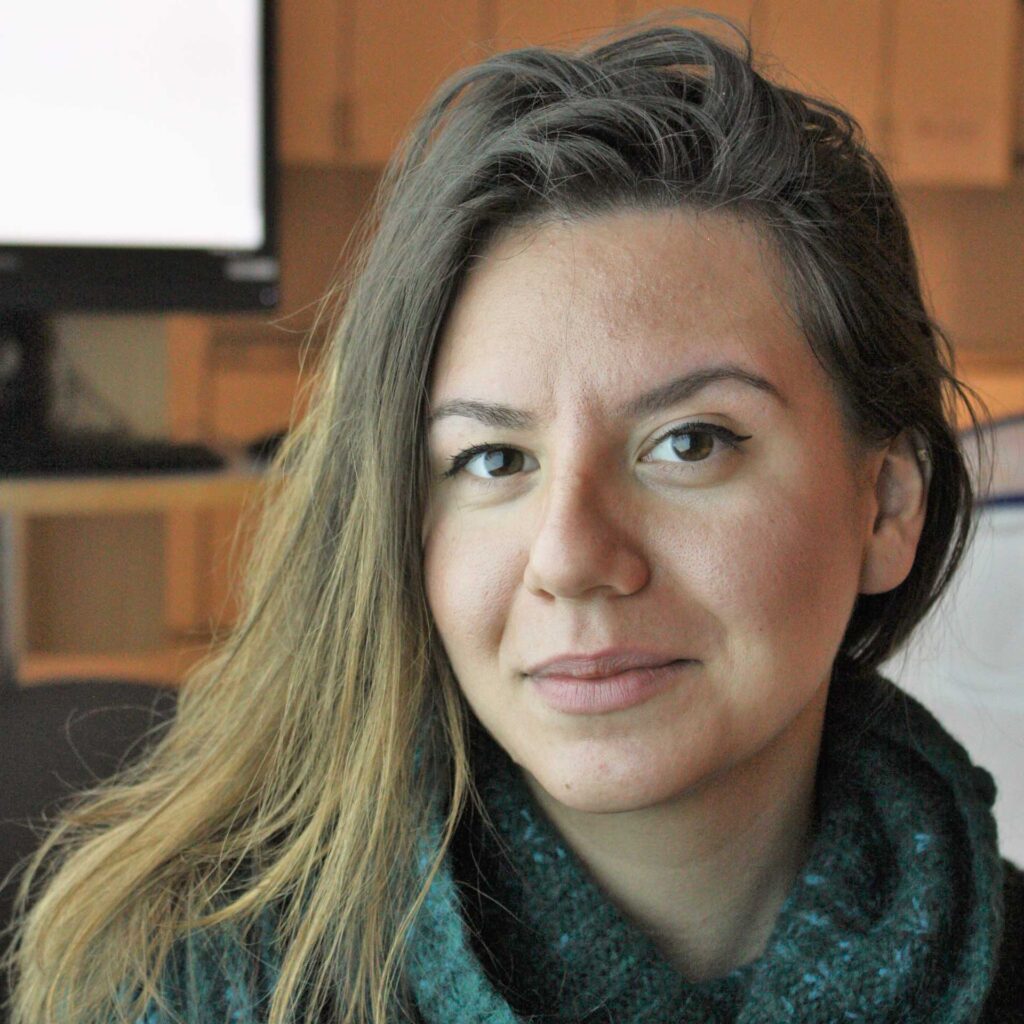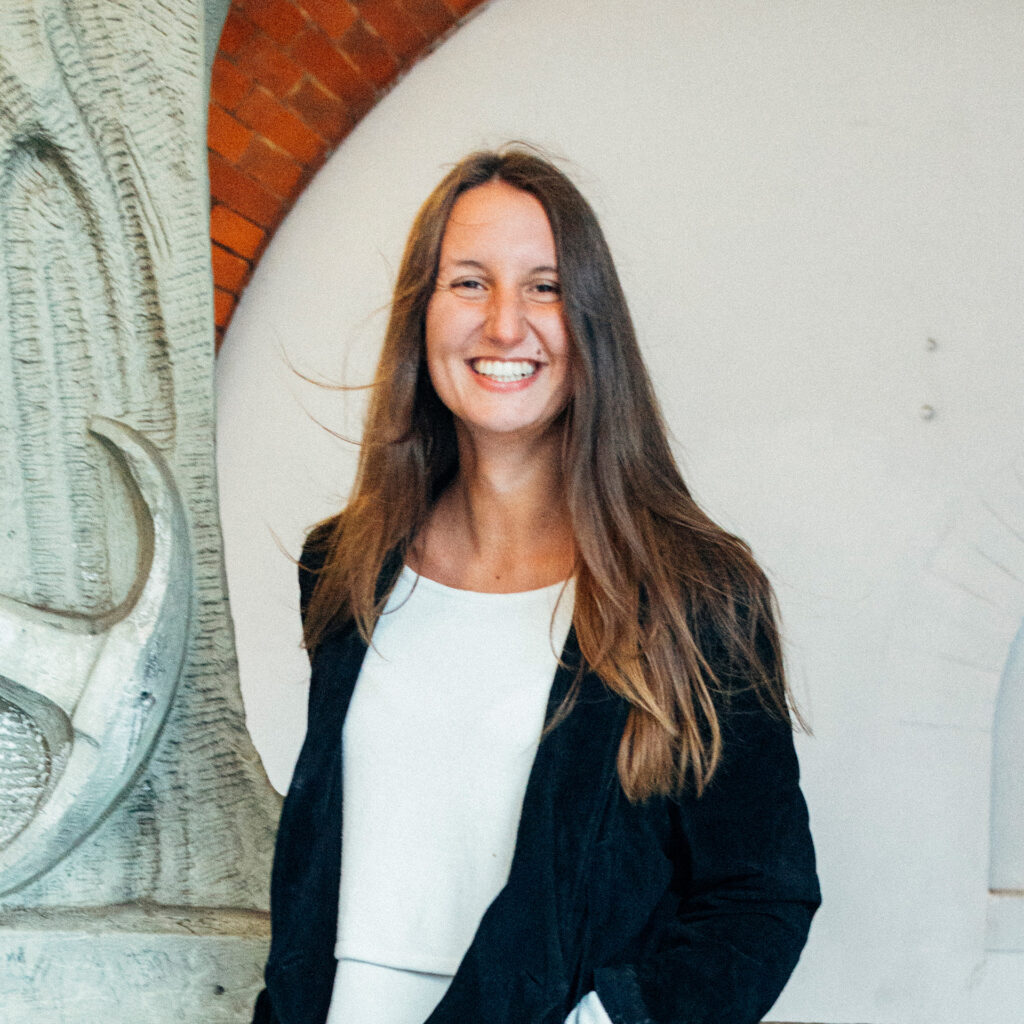People & Projects
SPEAKER
Marina Spadafora
Marina Spadafora gained a reputation worldwide for her own collection that featured sophisticated knitwear. Since then she has collaborated as a senior design consultant with Prada, Miu Miu, Ferragamo and Marni.
Marina’s work has always included a strong social and environmental focus, believing that ethics and aesthetics can coincide. Her motto is ” Fashion with a mission”.
Marina works to bring development to emerging economies through Fair Fashion. She has worked closely with WFTO, World Fair Trade Organization and its associated artisans.
Marina is a professor of sustainable fashion in many academies in Italy and abroad as well as director of the Master’s degrees in Fashion Design for IED Milan, Accademia del Lusso Milan and IAAD Turin.
Since 2014 she is the Italian country coordinator for Fashion Revolution. This global movement aims at raising consciousness among consumers about their buying habits and advocates for a more fair and ethical Fashion industry.
Marina received the United Nations Women Together Award in 2015 in New York and has done several TEDx Talks on Sustainable Fashion.
Marina currently consults luxury fashion brands and holds worldwide seminars and conferences on responsible Fashion.
Marina has written the book “ La rivoluzione comincia dal tuo armadio”about sustainable fashion with journalist Luisa Ciuni, Solferino Libri 2020.
Deborah Lucchetti

Deborah Lucchetti is a campaigner, dealing with labour and human rights, globalisation and solidarity economies.
She is the national coordinator of the Campagna Abiti Puliti, the Italian section of the Clean Clothes Campaign, an international network of over 235 organisations operating in over 45 countries that has been working for 30 years to improve working conditions for women workers in the global textile industry.
Alexandra Letts

Alexandra Letts is a qualified Lawyer, specialized in Public International Law, International Human Rights Law and International Environmental Law.
Following her Masters‘ Degree in London, she entered the Outdoor Industry and has been at the Oberalp Group since 2004.
She began her experience at Oberalp in the Purchasing department of the Apparel Division, managing costing and production, and after supplier agreements, production and production planning. There, she drafted and introduced the first Code of Conduct for suppliers, with social and environmental standards, and established its endorsement a precondition for the cooperation with Oberalp. Together with the Quality Department, she initiated what today is the Chemical Safety programme.
In 2011, Oberalp decided to create a central Sustainability Department, where Alexandra contributed in the risk assessment of supply chain and product-related issues, helped to build the strategy of the Group, and was involved in the engagement of important partnerships with stakeholders like Fair Wear Foundation and bluesign. She also strengthened ties with industry associations like the EOG and competitor Brands, aware that cooperation is key to making significant impact in this area.
As Sustainability Manager, she continues to develop the Strategy of the group. Always with the goal to develop and make products for mountain lovers, of the highest quality, in factories where workers are treated with dignity, and while leaving as little trace as possible in nature.
Mahya Hashemi
Mahya Hashemi is a 29-year-old textile designer who was born and raised in Tehran, Iran. She is a team member of Fashion Revolution Iran.
She studied BA in textile design at Tehran University of Art and did her Masters in illustration at the same university. Currently, she is pursuing a Master’s degree in Eco-Social Design at the Free University of Bozen–Bolzano.
She is a freelance designer and is passionate about design, the environment and sustainable fashion.
Exhibition
New Blue
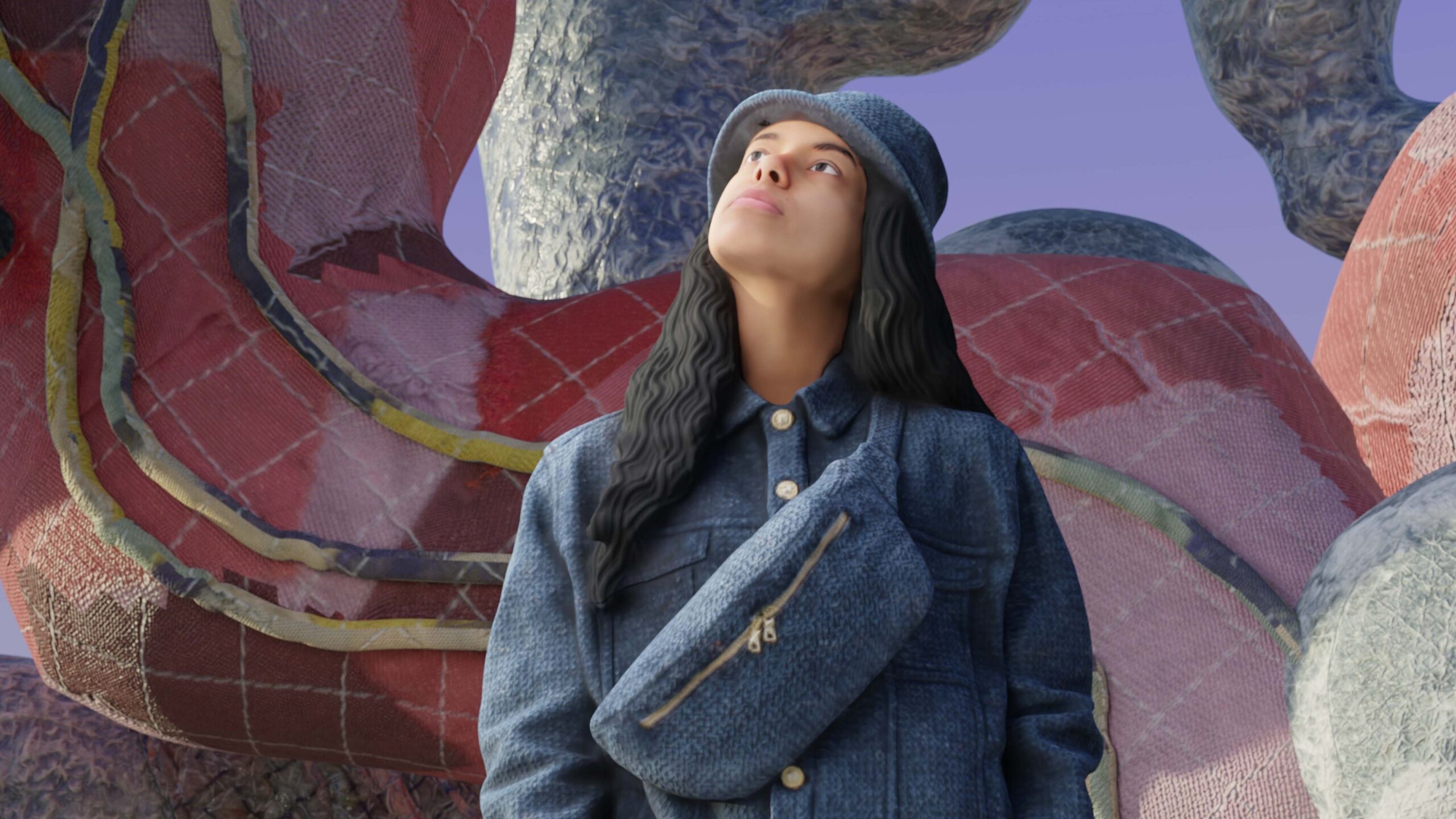
New Blue is a novel way of manufacturing jeans. It explores new pathways in the circular economy, aesthetics and production processes by focusing on unusable denim, which makes up a substantial part of textile waste. The aim of this project is to demonstrate that worn-out jeans are not only waste but can become part of new and continuous material flows, re-transforming into jeans again.
To start the whole process, jeans are cut into small fibres and then bonded to form a fleece. Here, two distinct qualities have been developed throughout the project: an industrially produced recycled jeans fibre non-woven, and a self-produced, “crafted” non-woven, made of no longer usable jeans.
The technology of digitally aided industrial embroidery is applied on the fleece not only to create a stable fabric but also to generate the cut-patterns needed for the final piece of clothing. When the non-woven cloth is being washed, the
non-embroidered parts of the fleece disintegrate when exposed to water. These loose denim fibres can be reused as raw material again, but the embroidered parts remain stable and can be sewn together without further cutting, establishing a circular and zero waste production.

A New Kind of Blue is a Berlin based design studio looking for locally embedded solutions to global problems with the starting point in circular economy. The studio is run by material and product designer Tim van der Loo. He strives towards rethinking the notion and aesthetics of recycled materials and creating truly circular product life cycles.
mend.IT

Mend.IT is an educational system combining the ideology of repair and redesigned methods of mending competencies acquisition.
The overall research was based on design ethnography and wardrobe studies in two different social contexts: Italy and Ukraine. The study has demonstrated that despite the recent upsurge of mending, both competencies and material artefacts facilitating the enactment of mending practices are missing.
Moreover, while in the past, mending was taught in schools, today, this learning mainly occurs within the framework of participatory workshops, which have a sporadic nature and do not allow a systemic change. On these premises, the project proposes a mending lab concept, enabling users to learn how to increase the lifespan of clothing by repairing and maintaining their garments. The project aims to reduce the acquisition and disposal of fashion products and reduce both pre-consumer and post-consumer waste.
Iryna Kucher is an Eco-Social designer and design researcher based in Denmark. She has a background in industrial design and completed her MA studies in Eco-Social design at the
Free University of Bolzano in 2019.
Currently, Iryna teaches sustainability at BA and MA levels and finalizes her PhD at Sustainability Lab at Design School Kolding in Denmark.
Her work lies in the intersection of design and all phases of clothing consumption: purchase, use and disposal, with a specific interest in practices from the past, which can become a source for sustainable futures.
Hand/Digital Crafts Footwear Concepts

Nicholas Rapagnani’s practice as a designer follows the eco-social issues caused by the footwear industry, addressing shoes’ life cycle design from materials extraction to their disposal.
Nocholas’ research aims to subvert industrial manufacturing systems through a G-Local approach, bridging traditional and digital crafts: shoes with a global design locally produced with sustainable materials, using 3D printing and 3D scanning technologies to tailor them to users’ feet.
The Growing Sneakers trainer, EITCH modular shoe, Mountain Future Tradition sandal and slide are examples of such revolutionary design method, where different categories of footwear are made of hemp fabric, natural tanned goat leather, and flexible TPU – reusable, recyclable or biodegradable materials. These projects envision the sustainable footwear revolution of the next decades, where transparency of processes united to sustainable design will lead to a worldwide change.
Nicholas Rapagnani is a passionate sneakerhead, a sustainability designer, a multidisciplinary researcher (footwear & materials), and an empathic networker.
Nicholas has a background in Industrial Design, specialising in Eco-Social Design. He finds inspiration from organic and inorganic worlds, combined with 3D modelling and printing, to pursue the vision of alternative ways of manufacturing by connecting traditional, digital and biological crafts.
He is currently researching mycelium-based growing materials for footwear production and the inclusion of Artificial Intelligence in design processes.
Dignity of Materials

Research on the aesthetics of eco-design raises concern for the dignity of sustainable materials as they have not been considered “worthy” of design. Does our perception of them change with the growing awareness for sustainability?
The project is dedicated to materials as informing media. By curating a collection of materials both the potential and limitation of undyed, ecological fibres as a design principle are investigated. Criteria for selection are: not dyed, not printed, and foremost organic, recycled, resource-saving and local. The elimination of wet processes saves vast amounts of water, energy and chemicals. Textiles of recyclablemono-fbre, of biodegradable recycling fbre and of separable constructions complement the material collection and fathom an honest, ecological aesthetic.
Nari Haase is a textile and fashion designer from Berlin. She holds a degree in Fashion Design and most recently graduated with an MA in Conceptual Textile Design at Burg Giebichenstein University of Arts and Design Halle. In her design practice, she pursues a holistic approach to sustainability and circularity and specialises in ecological materials and separable textiles.
Camping

Traditionally, weaving rag rugs meant recycling clothes, tablecloths, curtains or any worn or broken fabric there was in the house, which was shredded and then used as a weft for weaving mainly carpets. A choice most likely made for economic rather than ecological reasons.
Today, this technique becomes a conscious choice to try to use the immense amount of fabrics available on the planet that must be recycled and reused several times.
Elena Meneghini is a weaver and textile designer. In 2014 she graduated in Design from the Free University of Bolzano. From 2016 to 2020 she worked as a graphic designer for the brand Fornasetti.
Since 2017, together with Nicola Chemotti, she has been curating and directing Neue Serie Handdruck, a project that recounts and collects the production of screen-printed fabrics by the South Tyrolean Handdruck collective between the 1970s and 1990s. In 2020, she joined the Swedish craft school Capellagården where for two years she deepened her hand-weaving and textile practices.
In 2021, together with Caroline Donaldson and Giulia Pils, she founded Dòte, a research, teaching and production space based in Milan that focuses on textile culture.
ReFib – Recyclingfibroin as textile finish

ReFib – Recyclingfibroin as textile finish investigates the possibilities of dissolved silk in textile production. It resulted in wool yarn finishings, fabric coatings and organic shapes.
The color of the silk and its shiny properties were applied to other materials. This experiment runs under the research title silcularity which describes additional strategies for a more circular use of silk.
Designing futures in the Anthropocene is what drives this project. In order to achieve a higher level of resilience, new processes, materials, resource-efficient energy use as well as resource-efficient raw material extraction are required. It means making scientific findings tangible and, in the best case, usable
Kim Cordes is a master’s student in Conceptual Textile Design at the BURG in Halle (Saale). He holds a degree both in textile design and in economics and is concentrating on textile, research and photography.
The socio-ecological perspective on the textile and clothing industry defines his work. He develops new materials and ways of production by means of artist research. New concepts are directly implemented in his sustainable accessory Label klYmp.
The Alchemy of Scoby
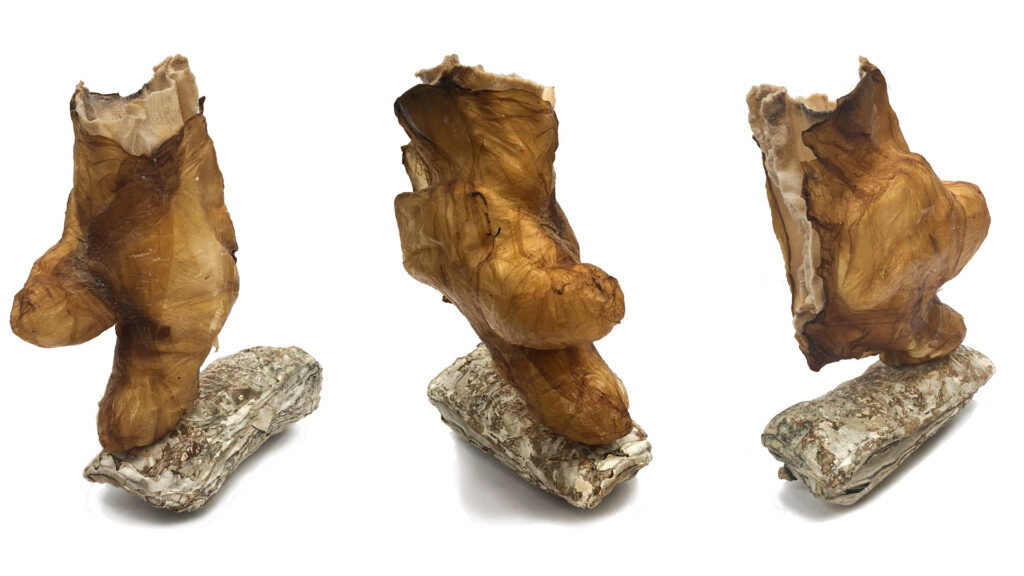
These prototypes embody different stages of the research from Carolina De lara’s Master’s degree project and represent different avenues investigating bacterial cellulose in the context of footwear through the creation biocomposite textile fashion objects.
While material development is at the forefront of the prototypes, the design narrative, positioned midway between speculative and transition design approaches, acts as a storytelling interface to facilitate viewer/wearer engagement with the prototype. Through this, emotional and intangible values of both design and material are raised, thus opening up the potential for better and more effective inclusion of bacterial cellulose and possibly
other bio- and living materials.
Carolina De lara is a footwear designer who graduated from the London College of Fashion completing her Master’s degree at The Swedish School of Textiles.
Carolina’s research focuses on bio-design applied to speculative footwear. Currently, Carolina is preparing to continue this project at the Kyoto Institute of Technology by exploring the potential of bacterial cellulose-based textile bio-composites in combination with diegetic design narratives.
1kg of Textile

Our fashion consumption has a huge impact on the planet. To keep global warming under the 1,5°C threshold we should consume a maximum of 1kg of textile per person per year when today the average is 10kg.
The story of 1kg of Textile shows a future where this is a reality. In a book and on Instagram, Alice Watel collects examples of how people can reduce their consumption today and how this could evolve in the future. For instance, a new industry of garment upcycling could develop. “My goal is to give people a toolset to change their behaviour and create a community of consumers who help each other to follow the slow fashion movement,” Alice explains.
Alice Watel is a fashion designer, Alice graduated from Duperré Paris and Design Academy Eindhoven. Design is for Alice a way to trigger change in society, in a positive way.
Alice Watel acts on finding solutions to raise awareness about climate change and inequality between human beings. Clothing is Alice’s favourite form of expression because it reflects our identity and conveys our values, and because the fashion system has to be reinvented. Alice Watel is very excited to be part of that transformation.
SEMBLE

SEMBLE is a shoe concept that focuses on the interlocking of different elements and materials in a reversible connection. Instead of a sole and an upper sewn and/or glued together, it shifts into a combination of sole(s) and sock(s), offering a variety of ever-new arrangements.
This not only avoids problems of shoe recycling but also invites consumers to creatively redesign and adapt their shoes to their individual wishes and needs. During the day comfortable with a good hold, at night elegant and fine. In summer airy and refreshing, whilst in winter cozy and warm.
SEMBLE 1.0 embodies one possibility of this concept: a prototype consisting of one sole and three socks constructed without any glue, where every material connection can be easily disassembled into its original components.
Clara Santos Thomas is an interdisciplinary designer, with a special interest in materiality and textile construction, that recently graduated in textile and surface design at weißensee kunsthochschule berlin. By observing manual gestures, human interaction and spatial perception, she questions the limits of textile construction for a sustainable future. In her work, she explores the potentials of existing (textile) structures, shapes and gestures, through a constant dialogue between analysis and experimentation in digital and analogue processes.
Interwoven

Growing design is an emerging new design approach at the confluence of biology, art and design. It challenges current industrial consumption and production because it offers the opportunity to co-create with nature and shift the paradigm of production towards more sustainable solutions.
Diana Scherer is a visual artist exploring the creation of a novel material called Interwoven, which is made of plant roots. In contrast to comparable textiles made from natural fibres, the material itself weaves. Producing itself through the search for nutrients and water.
In collaboration with the TU Delft this thesis project explored different methods towards improving the strength of Interwoven as a bio-composite while assessing its technical and experiential properties. The final design stands as a speculative functional artefact, representing the possibilities of growing design.
Client & Collaborator: Diana Scherer
Collaborators: Elvin Karana & Marieke Sonneveld
Damienmarc Ford is a UX product designer with a passion for emerging materials that can move us towards safer and less polluting forms of production. His master’s thesis at the TU Delft focused on growing a textile out of the roots of grass and how this delicate material can be processed to express durable characteristics.
His recent work in the WASH sector included the development of a hand wash station that can recycle its own wastewater in order to make hand washing practices more accessible in rural Ghana. His latest project is the development of Giramondo, a sustainable shoe brand.
Alpinista

Having grown up in a mountainous area, I used my experience with alpine sports to create Alpinista, a collection of functional outdoor garments, which reuses paragliders as a primary material.
Sport paragliders can only be used up to a certain amount of flight hours, after which the fabric becomes a waste material. The project gives this material a new application through fashion.
Alpinista proposes a collection of outdoor outerwear which is lightweight and
provides wearers with a sense of protection and security. All designs are based on anatomical studies of the body and emphasise comfort and empowerment, by referencing dynamic lines in combination with safety equipment such as harnesses and armored protective gear. The garments are designed to stimulate and challenge the wearers’ desire to do something
extraordinary.
Elèna Kostner is 24 years old and from Val Gardena, Italy.
In 2018 Elèna moved to the Netherlands and started studying at the Design Academy of
Eindhoven.
2020 Elèna spent a semester in Switzerland at the Zürich School of Arts, department
Industrial Design.
In 2021 Elèna accomplished a six months internship in La Neuveville, Switzerland at the Design Studio Atelier Oï, where Elèna developed skills in 3D drawing, sketching and prototyping.
Since then Elèna has developed ‘Alpinista’ further and exhibited the project at the Dutch Design Week, the Greener Manufacturing show in Cologne and got nominated in the category of sustainable
fashion at the Green Concept Award.
Elèna graduated from DAE in June 2022 with the Project ‘Alpinista – Empowering
Garments’.
Transitory Yarn
One Sheep for a Lifetime

While microplastics from clothing are already found on top of the Himalaya, a concerning amount of sheep’s wool in Europe goes to waste. The fashion industry is a wasteful business. So how could we design fashion on a planet facing scarcity?
Transitory Yarn is a process and design principle that enables circularity in the fabrication of clothing with the help of knitting technology. The original wool is kept in the loop over several garment life cycles by a process of unravelling and reknitting.
A Sheep’s Wool Simulator helps to imagine the (re-)creation of custom pieces using only a very limited amount of high quality material. A set of Circular Knitwear patterns specifically designed for the disassembly process ensure a smooth transition from one piece to the next. The Unravelling Machine invites users to become part of the process.
One Sheep for a Lifetime (the Sheep’s Wool Simulator) was initiated and developed by Alexandra Fruhstorfer, Max Scheidl, Hannah Kelbel and Giulia Fabro.
Alexandra Fruhstorfer is a transdisciplinary designer and researcher based in Vienna. Using design as a strategic, yet playful tool she aims to enable more equitable imaginaries for our material culture on a planet in trouble. In her practice she creates artefacts and experiences that provide space for critical reflection and collaborative action.
Alexandra graduated from Industrial Design at the University of Applied Arts, where she also holds an artistic research position. Her work was shown at the Triennale di Milano, the MOMA New York and lately the Jerusalem Design Week.
***
Max Scheidl is a Viennese designer who’s creative practice is inspired by futures thinking. Exploring the field between social sciences, emerging technologies and sustainability he aims to make the complexity of wicked problems discussable and understandable for a broad audience. He develops services, tools, objects, imagery, campaigns, strategies, and interactions to engage new audiences in negotiations about the future.
Max graduated from Industrial Design (now Design Investigations) at the University of Applied Arts, is part of an experimental choir and member of Fantoplast.
W.I.Y.S.S

W.I.Y.S.S explores questions and tensions about a biracial background through tubular knitted structures made with natural elastics.
Miriam Scheller developed 100% woollen elastic with high resilience properties using a specific spinning method. This enabled Miriam to create highly elastic tubes that can cling and interact with the body from 100% regenerative and biodegradable materials instead of relying on elastane made from fossil fuels.
In the interaction, the materials allow shifts in opacity and transparency. This visualizes a dialogue and the fight biracial-person experience on how restricting presumptions of their identity solely based on looking at them are.
Additionally, the deformed human silhouette gives the impression of objects and showcases the dangers of objectification. Besides creating new sustainable solutions and practices, W.I.Y.S.S aims to provide social and ethnic commentary.
Miriam Scheller is a textile designer passionate about challenging and expanding the possibilities of knitted body wear. With a master’s degree in fashion and textile design, a background in pattern drafting and sewing, and experience in garment and knitwear development. This unique set of skills and expertise enables Miriam to continue to push the boundaries of knitted body wear and innovative designs
Die Hemden deines Vaters

The project Die Hemden deines Vaters addresses the question of how we can deconstruct the post-consumer waste of already patterned and dyed garments and transform this “disadvantage” in the process of traditional recycling into a design tool.
Working only with worn, classic patterned men’s shirts, Luise developed a cutting technique that unravels the already woven fabric, transforming it into processable yarn. The stripes retain the color and geometric coding of their previous patterning, but slip away like a mistake, so that their new arrangement, simultaneously reveals the disruption and dissolution of the original order.
This technique creates a very unique and new aesthetic of upcycling, with novel textures and patterns that appear controlled but free of perfection.
Luise Schumacher is a textile designer and knitter living in Berlin, where she also recently completed her studies at the weißensee kunsthochschule berlin.
In her work, the boundaries between textile construction and manipulation, fashion design on the human body, and visual art often overlap.
She repeatedly employs a wide variety of textile techniques to give used textiles and post-consumer waste a new materiality and value.
no more than

no more than makes valuable, hand-woven clothes. Using natural fibers, the clothes are woven in one piece and their shape is based on own block pattern designs. no more than garnments are made in a self-build weaving house in a garden in Bremen, Germany. It combines side specific fashion with high resolution handwoven textiles that offer close touch with nature. no more than wants to change the way we produce and consume fashion and connect wearers to their dresses through what they both are: beautiful, fragile natural matter.
The garden itself is part of no more than. Attentive exploration of nature is in the foreground here, as opposed to controlled cultivation. A website is currently being planned that will include an encyclopaedia of the garden’s plants and produce. In the future, no more than will offer residencies for textile artists, fashion makers, cooks and gardeners.
Luisa Recker, a fashion designer and textile artist.
Luisa is the founder of no more than based in a garden in Bremen, Germany.
Since 1,5 years Luisa works as Co-Teacher for BA students in fashion design at the HAW Hamburg.
Since 3 years Luisa works at the social textile–workshop „Neue Wolle“, where I make up textile based art, craft and design projects with immigrant women. In the past I worked for HENRIK VIBSKOV in Copenhagen and BLESS in Berlin.
LuisaRecker has a BSc in Psychology (Trier University), BA in Fashion Design (HAW Hamburg) and a Master of Fine Arts and Crafts in Textile-Body-Space (Gothenburg University, Sweden).
Kleo Customizable Shirt
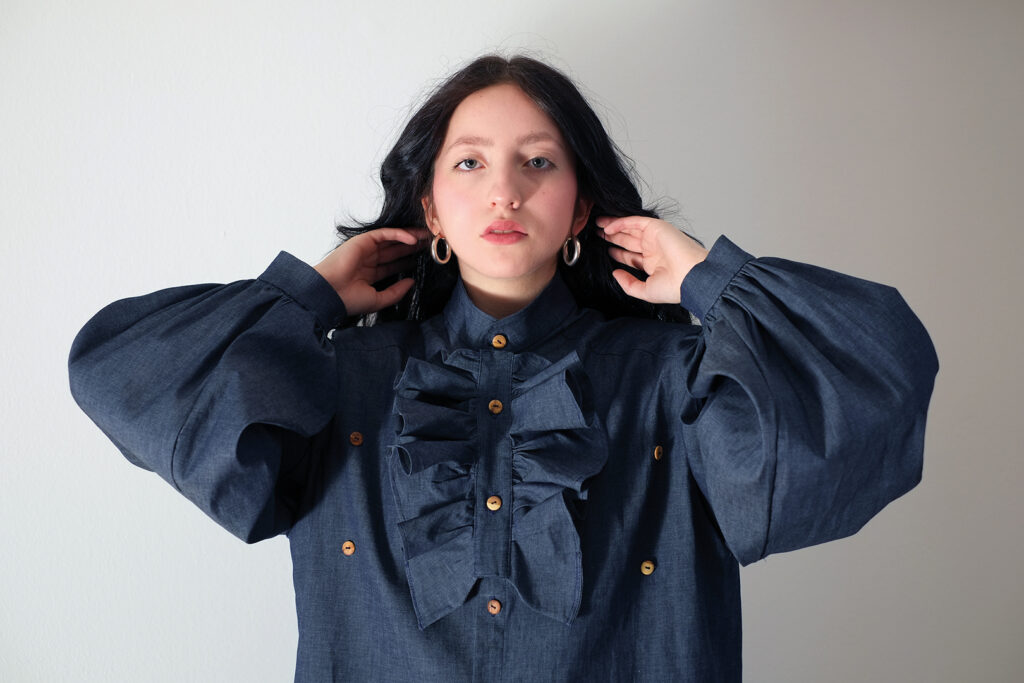
In today’s world where environmental concerns are a top priority, the importance of responsible fashion has increased significantly. The fashion industry is a major contributor to
pollution and the time has come to act.
Inspired by the 19th-century habit of continuously transforming clothes to suit every occasion, Alejandra Deaza Silva created a customizable shirt with the intention of creating a functional wardrobe with less waste.
The proposal aims to revolutionize the way we think about fashion, through a playful approach, this shirt will not only help consumers embrace responsible fashion practices but will also encourage them to make informed choices. With the ability to personalize the shirt, consumers can create a versatile garment that can be worn in multiple ways, reducing the need
for excess clothing. This proposal represents an example of how we can contribute to having a positive impact on the environment.
Alejandra Deaza Silva is a fashion and costume designer. Alejandra was born in
Bogotá-Colombia and moved to Bolzano in 2000.
Alejandra has always been passionate about fashion thanks to her grandmother who was a seamstress. Since early childhood knew which path she wanted to take.
Alejandra graduated in Industrial Design at the Free University of Bolzano, with a thesis on the reinterpretation of the wedding dress, which won an honorable mention in the V edition of the Lucky Strike T. Designer Award.
Alejandra additionally graduated in pattern making for fashion and costume design.
After various work experiences, Alejandra decided to create her own responsible fashion brand.
nat-2™

nat-2™ was founded by Sebastian Thies, 6th generation shoe designer since 1856 in Munich.
The internationally awarded, sustainable high-end label for sneakers & shoes is available from top international retailers and has already been included in the collections of renowned international museums.
nat-2™ founded by Sebastian Thies is the most innovative high-end sustainable footwear brand bringing never used before natural materials into footwear design such as real stone, coffee grounds, hayfield, corn, cork, mushrooms, oxblood, fish leather, flowers, cannabis, red pepper, skeleton leaves, moss and many more.
nat-2™ is available at international top retailers, received international awards and is part of renowned museum collections.
nat-2™ addresses the entire fashion industry by using disruptive materials and design in order to create awareness around potential consumers, but also people in general, no matter if they can afford the brand’s products or not. Showing that design can only be considered as good if it is sustainable at the same time, nowadays.
At nat-2™ no compromise is being made. Even the most progressive materials, designs and storytelling is executed, showing that a brand a create its own market, which has not existed before by creating a product that people really pay attention to and make them think, consider and consume with consciousness. nat-2™ also shows that sustainable design does not have to look eco, but can be groundbreaking, timeless and meeting the Zeitgeist.
Sebastian Thies, born in 1981 in Munich, married, has two sons and works between worlds. Between old family traditions and completely crazy innovation.
Thies is on the one hand part of the sixth generation of the shoe company thies®, which has been run since 1856, and on the other it is the founder of the high-end sneaker marker nat-2™, which offers unisex shoes made from special materials such as wood, hay, milk, ox blood, glass and coffee grounds stand out.
He also works as a designer, consultant and creative director for other brands and department stores. His work has been honoured in the literal sense of the word: among others with the Red Dot Design Award, the Ispo Brand New Award and the German Brand Award his own.
The sustainability-oriented label nat-2™, which he founded in 2007, is also listed in the book “Fifty Shoes that Changed the World” by the London Design Museum. He was recognized by the textile industry as one of the 100 creative minds in Germany and sits on the jury of the Worth project and the EUSIC competition. Many works have been shown in museums such as the Grassimuseum, Cube Design Museum, Kunsthaus Wien, MKG etc. and have been included in the collections. Thies is also a member of the Fashion Council Germany, a creative pilot and originally a Fellow of the KKW.
matter(s)

matter(s) is a collection based on experimental studies of flax and
linen. The cuts are inspired by the versatile properties and stories of the material and cannot be assigned to one gender. The aim is to make linen aesthetically visible and thus to free it to a certain extent from its eco-image. Wearers and viewers are encouraged to think about material decisions and the more sustainable consumption of clothing.
For the rain coat, linen fabric is treated with linseed oil and cured by air oxidation. This makes it water repellent. The oil hardens over several weeks and is then grease- and largely odor-free. The technique was already used by the Etruscans, who took advantage of the stiffness to produce armored clothing.
As a textile artist, Anne Marx works on making social phenomena visible, on questioning conventional production techniques and reversing habits. Experimenting with combinations of materials and methods, she designs wearables, objects and spaces that promote sustainable use as well as an appreciation of textile materials.
Sailing Collection

Creating something that does not require new resources is what inspired me for this project.
Judith Grah finds a lot of Inspiration in using high-quality materials that have become obsolete in their original form and reusing them for greater purposes. Dealing with the material limitations and incorporating the stories they hold within them revives concrete or abstract memories within the garments.
In this project, it is Judith’s father, sailing his first sailboat when he was a teenager, paired with her own childhood memories of being taken on an Atlantic sail on the exact same boat. The design is connected to the feeling of stormy seas, salty air and the wideness of untamed oceans. A feeling of fear, excitement and freedom. All shapes are inspired by the traditional forms of sails.
Judith Grah was born in 1993 and grew up in the idyllic Berlin suburb of Kladow as the middle child of three.
A creative mindset was valued and rooted early in our parJudith’s upbringing.
Judith attended a school based on the Philosophy of Rudolf Steine, which offered, besides average subjects, a lot of artisanal subjects such as gardening, crafts and woodwork. Practical subjects were always the ones that Jusith could mostly identify with.
Thus, it wasn’t a surprise that after graduating in 2013 Judith felt disconnected from the idea of continuing the educational system in a conventional way, not lastly due to reason I did not know what path to follow profession-wise.
After working and travelling Judith rediscovered her passion for handcraft, textiles and fashion during an internship at a tailor in Berlin. In 2021 Judith graduated with a Bachelor in Fashion Studies from Kunsthochschule Berlin Weißensee. Currently, Judith Grah is living and working as a costume designer in Berlin while alongside creating her own fashion.
Kombutex

Kombutex explores bacterial cellulose applications in textiles as a better alternative to synthetics and leather. Currently carried out as a scientific research project at FU Berlin, Kombutex focuses on using biobased surface coatings to create textile products that are fully biodegradable at the end of their lifecycle.
Kombutex textiles are made from bacterial cellulose which is a by-product of kombucha brewing. Using bacterial cellulose to create textiles furthers the lifecycle of the waste material, whereas using biodegradable coatings contributes to a more circular production process. By bridging the food and textiles industries, Kombutex aims to contribute to a more ecological and localised production system of textiles.
Guoda Treciokaite is an interdisciplinary scientist working in the fields of bio-design, textiles and material innovation.
As part of her master’s degree in Polymer Science, she is researching bacterial cellulose and biodegradable polymer coatings for textile applications at FU Berlin.
Her work was exhibited at Dutch Design Week and her project Kombutex won the Circular by Design Award in Luxembourg. With her team, she was a finalist at the Biodesign Sprint 2022 for their food design project Earthlies
CRISPR

Even though, the technique CRISPR-Cas9 is still at an early stage and the knowledge about the DNA of organisms is still limited, the basic principle is defined.
This can be translated into an example including two organisms. Hemp is an environmentally friendly crop. It provides resources for the fabrication of skin care products, it is edible and its fibres can be used in the textile industry – just to mention a few properties. Compared to cotton, it only needs a small amount of water and almost no pesticides to grow.
By using CRISPR, the DNA of the hemp plant could be modified. For instance, colours could be changed. Flax has blue blossoms. The gene determining the hue of the flowers could be extracted and transferred into the DNA of the hemp plant. There, it should be positioned in its genome where the properties of the stem are defined. Blue fibres could be grown within the hemp stem. This could avoid an immense amount of energy and water that would otherwise be spent on the process of dying fibres and textiles.
Anja EIlert is a designer with a focus on materials, with a background in textile design and Material Futures.
Anja is particularly interested in working at the intersections of design, art and science as she is convinced that design and research interests can meet and inform each other. For that reason, Anja values interdisciplinary collaborations very much and believes that they hold a lot of potential for innovative and progressive ideas.
Anja concentrates on sustainable topics (in an ecological, social or another way) and aim to help shape the future in a positive way.
SEADS

With her colorful unisex ocean plastic espadrilles, SEADS founder Agnes Wagter not only creates relaxed-elegant summer vibes. Her circular shoe label also contributes to reducing and recycling ocean and packaging waste and, in addition, draws attention to one of our biggest environmental problems, plastic waste.
Originally, Agnes Wagter, blessed with a size 43 shoe herself, wanted to design a line of women’s shoes for large feet. During a walk on the beach after a stormy night, with washed-up plastic waste scattered all around her, she spontaneously changed her concept. She still wanted to make shoes. But shoes with a mission: to Give the Ocean back to Nature.
The model? Espadrilles. Reinterpreted in a modern way with a sneaker knit upper in 3 styles: classic, as slip-on, and as joggers with laces. And of course, the bright good-mood SEADS shoes are produced in sizes 36 to 46. Because every size matters!
OFFASHION

OFFASHION can be read in two ways:
Of Fashion meaning ‘something about fashion’, or Offashion, reading ‘out of fashion’, as something that is not fashionable anymore. This playful dualism represents the way fashion is often perceived and used amongst people, especially adolescents when behaviours, as well as garments, are quickly categorised as in or out of fashion.
OFFASHION is a starter kit that offers ways to support adolescents to critically reflect and position themselves with fashion while respecting their identities and enabling their self-expression and creativity.
It is a reference tool and a go-to resource for those who are mentoring, teaching or supporting adolescents to develop meaningful relationships to fashion, through the facilitation of two practical activities in the format of workshops.
All the resources are carried in a practical, ready-to-go tote bag.
Maria Pasqualini is an Italo-Brazilian multidisciplinary designer interested in all things related to fashion matters.
Maria designs participatory concepts that tackle sustainability in fashion, enabling people to inquire into environmental, economic, and social issues. Currently,
Maria works as a sustainable designer for the South Tyrolean womenswear brand Grenz/gang.
Upcycling is the Future

All 3 works exhibited are connected with the will to use what already exists. In these cases combining textile waste with different techniques into new fabric and therefore into fashion statements.
woven bomber jacket:
At least 10 pairs of used jeans were cut into stripes to sew tubes, which then were woven together to create a new fabric. The pattern of the jacket was used as base for the weaving process, that means that the back, the sleeves and the two fronts were woven separately, to avoid new textile waste during the construction of the fabric.
This jacket must be seen as a prototype for many more woven stories to come.
Pullover made out of socks
From the feet to the chest. A bag full of worn and damaged black socks inspired to form a flat new fabric. The socks were cut into two pieces and sewn together to become the now seen pullover.
Coat made out of textile scraps from my colleagues at seamstress school
During the educational training to become a seamstress me and my colleagues all had to make a coat. The then remaining scraps of fabric were collected, laid flat between two layers of water-soluble fleece and sewn together with many seams in different colors.
The fleece was already cut into the future pattern with some more seam allowance to avoid new textile waste again during the process.
Julia Vontavon was born and raised in Bressanone, with stops in Vienna to study languages and get a little taste of architecture.
Julia is a trained seamstress, currently working as an upcycling artist, not just in the textile sector.
Julia is the head of the holistic recycling project REX – material and things.
Zeefier

Zeefier colors textiles with seaweed waste streams. Textile is a large and polluting industry. Especially synthetic dyes are a threatto our health and environment because of the dangerous chemicals that theyoften contain.
Zeefier believes seaweed is an answer to this problem since itdoesn’t require fresh water, agricultural land, or chemicals to grow. It purifiesCO2 and produces oxygen. Different industries understood this potentialand have started to use this beautiful material, like in food and cosmetics. This results in large amounts of waste streams or by-products.
Designer andartivist Nienke Hoogvliet has worked on the perfect recipe for artisanal andcircular textile dyes from seaweed for the last 8 years. Her dream has always been to radically change the textile industry.
That’s why she joined forces with Anne Boermans and together they established the company Zeefier.
They are working with natural dye professor Dorien Derksen and a team of experts onupscaling the processes to make them available to the whole industry.
Morphogenesis

Thai work shows the possibility for a local, climate- positive circular fashion system in coastal communities.
The fashion industry and industrial agriculture lead to eutrophication and the growth of ecological dead zones in the sea. Due to the lack of oxygen in these zones, marine ecosystems are destroyed.
Bea is exploring the cultivation and processing of algae species that can regulate the nutrient content of the water and therefore combat dead zones. She uses these algae to produce a compostable alternative for leather.
This work is accompanied by digital and video artworks that are set in a speculative reality, where diverse communities band together to create advanced biofashion tools and challenge the neoliberal status quo.
Bea Brücker is an award-winning designer, artist and researcher. Her work explores the potential of biodesign as a tool for social, political and ecological progress in response to the climate catastrophe.
After completing her MA at the Royal College of Art in London, she taught the bio-platform there. She is part of the Centre for Design Research at HAW Hamburg and regularly works on interdisciplinary projects with research institutions, theatre and film productions or on art installations. She explores the development of algae materials to develop a climate-positive, post-capitalist fashion system.
Her work has gained international exposure through exhibitions such as Future Forum: DWIH New York, Design Zentrum Hamburg, Fashionclash Festival, and at Berlin Fashion Week.
Create™
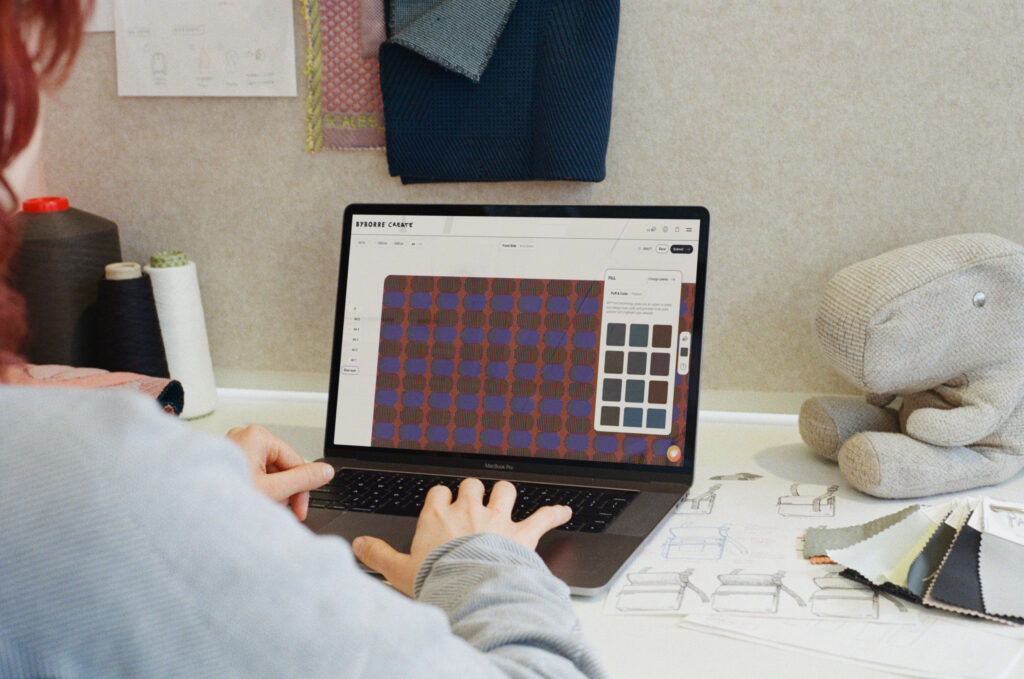
Create™ is a digital design software that gives brands, designers and creators the ownership back over the design-and production process, with direct access to textile creation technology and the capabilities of circular knitting machines via an online design tool. Offering a service as solution and enabling creators to make less but more meaningful and responsible products.
There is nothing we use more than textiles on and aroundthe body, but often the process before the end-product is not discussed, revealed or simply unknown.
In Create™ the supply chain is reversed and thereby the design-and production process works in the opposite direction. Instead of finding a textile that matches the design, creators now can design from the yarn up, making more conscious decisions along the way.
Borre Akkersdijk and Arnoud Haverlag founded BYBORRE in 2015 to realize their ultimate mission to inspire and enable an entire generation of creators to make better and more responsible textiles for everyday products.
Together with their international team of 50+ specialists, they took on the responsibility to push the boundaries of the conventional textile industry, make responsible textiles more accessible through material innovation, digital design services, and on-demand production.
Parliament of Sustainable Fashion

It is said that we live in a materialist society, however, some argue that we are less material-focused than ever, and only in achieving ‘true materialism’ can we understand our clothing more and therefore demand less of them. By generating a dynamic understanding of our clothes, and the ways in which we use them, we can return to a state of true materialism.
The Parliament of Sustainable Fashion (PoSF) is a concept developed to welcome all practices of clothing care and sustainability. Inspired by Bruno Latour’s ‘Parliament of Things’, the PoSF is a way to give agency and autonomy to garments. It works outside the capitalist framework by building emotional connections to our clothes and to others. Using feminist, pluralised and decolonised perspectives; PoSF intends to transform the sustainable fashion discourse into one of inclusivity and democracy.
Mollie Edge is an eco-social designer from the UK, focusing on alternative production and consumption systems within the fashion and textile industry.
Mollie’s work involves using clothes as a medium for communication and is often centred around human behaviours, emotions and storytelling. She likes exploring the intersection of traditional practices with psychological and sociological theory.
Mollie facilitates various workshops and activities related to clothing care and more recently has been working with young people in Bolzano to learn more about their attitude to clothing.
Handswork

Handswork is a workshop focused on carpet manufacturing. In collaboration with various services, the workshop has hosted hundreds of people since its launch in 2001, who in turn have become part of the carpet manufacturing process and of the development of the initiative itself.
The aim is to develop and innovate the sector while continuing to be faithful to the recycling of used material, the design of our territory and Italian craftsmanship. In occupational rehabilitation services, people can experiment with various crafts activities and carry them out autonomously under the expert guidance of educators and social workers. The rehabilitation program takes into account the history and skills of each person.

Handswork is a work rehabilitation service from the non-profit organisation Hands. It offers its services to people with addiction problems to re-enter the world of work. Its mission is to provide training and employment opportunities to people who decide to change their lives for the better. We offer them the best possible support, so that they learn to balance their strength and convic1on, to radically change their lifestyle and adapt to a life without addic1ons.
Clean Clothes

Exhibition Fashion Revolution Clean clothes and what’s behind them. How much does a sewer earn in Bangladesh?
Where is cotton grown and how many pesticides are used? How far does a T-shirt travel to end up in our wardrobe and what labels can we look out for? Ten oversized T-shirts provide answers to these and other questions about global clothing production.
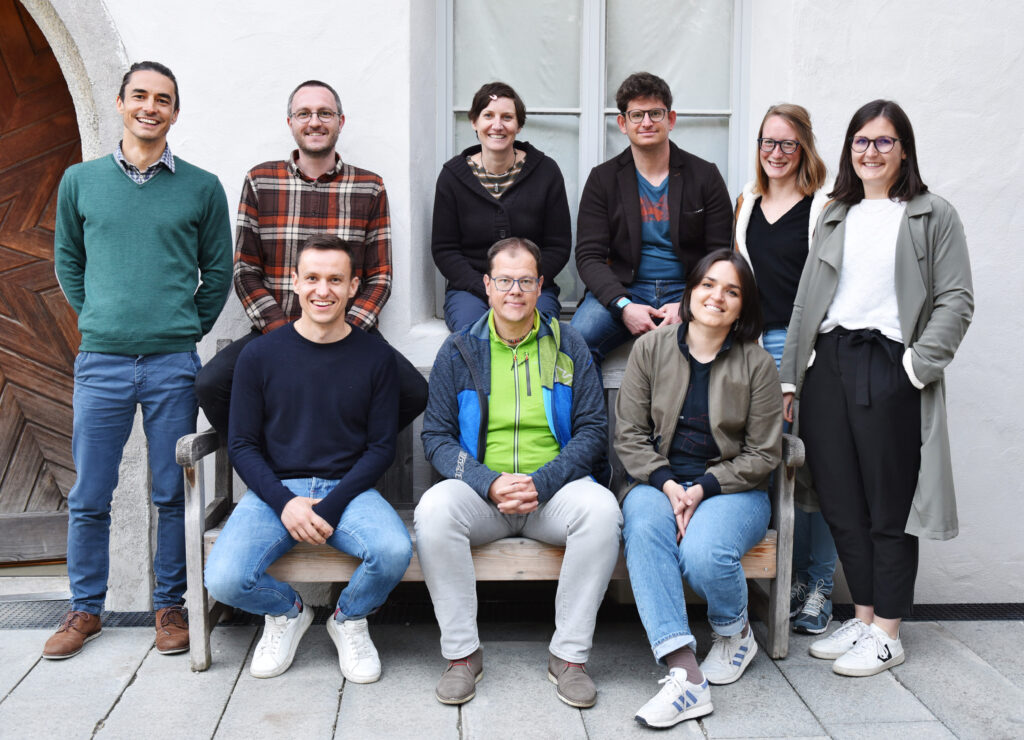
The OEW-Organisation für Eine solidarische Welt is a non-profit organisation based in Brixen. For around 30 years, it has been working in South Tyrol for an open society, conscious consumption and sustainable international cooperation. By supporting educational and social projects, the OEW seeks to promote a sustainable commitment to a fairer world and to raise awareness of different realities of life. OEW is a member of the Clean Clothes Campaign Italia.


